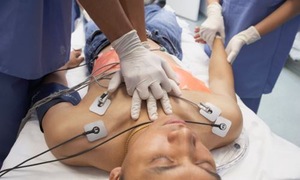
Unlike animals such as the salamander and the zebrafish, humans are unable to easily regenerate heart cells, making it difficult to recover from the permanent damage caused by heart attacks.
But scientists from the Weizmann Institute of Science in Israel and the Victor Chang Institute in Sydney have discovered a way to stimulate heart muscle cells to grow, which could have major implications for heart attack sufferers in the future.
While human blood, hair and skin cells renew themselves throughout life, cell division in the heart comes to almost a standstill shortly after birth, an author of the research, Prof. Richard Harvey, said.
“So there’s always been an intense interest in the mechanism salamanders and fish use which makes them capable of heart regeneration, and one thing they do is send their cardiomyocytes, or muscle cells, into a dormant state, which they then come out of to go into a proliferative state, which means they start dividing rapidly and replacing lost cardiomyocytes,” Harvey, from Victor Chang’s cardiac research institute, said.
“There are various theories why the human heart can not do that, one being that our more sophisticated immune system has come at a cost, and because human cardiomyocytes are in a deeper state of quiescence, that has made it very difficult to stimulate them to divide.”
But through studying mice, Harvey and his colleagues have uncovered a way to overcome that regenerative barrier – at least in the rodents.
They found that by stimulating a signalling system in the heart driven by a hormone called neuregulin, heart muscle cells divided in a spectacular way in both adolescent and adult mice. In humans, this hormone is usually blunted about one week after birth, and by about 20 weeks after birth in mice.
The triggering of the neuregulin pathway following a heart attack in the mice lead to replacement of lost muscle, repairing the heart to a level close to that prior to the heart attack.
Harvey said scientists should know within five years whether it is possible to replicate the results in humans.
“This is such a significant finding that it will harness research activities in many labs around the world, and there will be much more attention now on how this neuregulin-response could be maximised,” Harvey said.
“We will now examine what else we can use, other than genes, to activate that pathway, and it could be that there are already drugs out there, used for other conditions and regarded as safe, that can trigger this response in humans.”
Heart attacks occur when one of the vessels that feed blood to the heart muscle becomes blocked, causing billions of cardiomyocytes to die. Many people who survive a heart attack have a diminished quality of life because of this.
“The dream is that one day we will be able to regenerate damaged heart tissue, much like a salamander can regrow a new limb if it is bitten off by a predator,” Harvey said.
The research was led by molecular biologist Gabriele D’Uva and the findings were published on Tuesday in the scientific journal Nature Cell Biology.
